Should We Make Digital Twins of Our Bodies?
Should We Make Digital Twins of Our Bodies?
- Last Updated: December 2, 2024
Hari Harikrishnan
- Last Updated: December 2, 2024



Digitizing paper health records is a far cry from the benefits we could get out of our own digital twin.
The world of Industrial Internet of Things (IIoT) is awash with stories of how digital twins will create value via predictive maintenance. For example, consider the many discussions we have everyday on how early detection of failures of a robot in a production line can save millions from preventing downtime (“ZDT” or Zero-downtime), if only it were connected and monitored from the cloud.
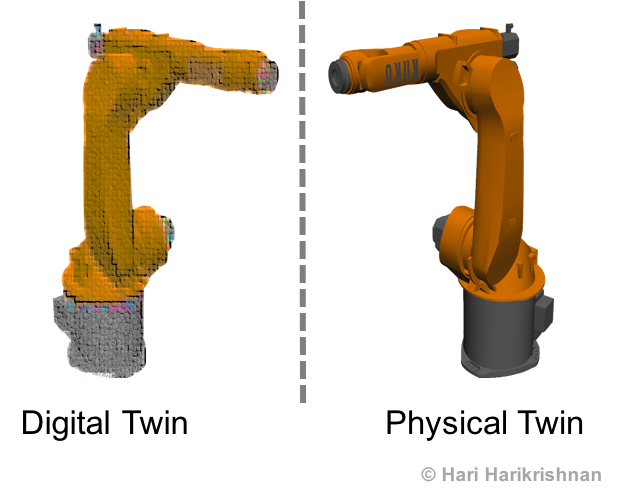
EHR: Maintenance Logs in the Cloud
The world of healthcare on the other hand has EMRs (Electronic Medical Records) and EHRs (Electronic Health Records) which are digital paper logs that document our truck rolls for reactive maintenance to hospitals, physicians, and pharmacies.
EHRs are viewed as more comprehensive than EMRs. Still, they are like the data logs that come out of a computer or a robot about what happened to us, why we went to a healthcare provider, etc. We are 90% there with fully digitizing patient logs over more than two decades across the world.
EHR's are nothing but Personal health log files in the cloud.
EHRs serve their purpose for coordination of care across all care providers by providing an easily accessible and complete history.
Are EHRs enough? In a world of digital twins for our big and small equipment we own and use, isn’t it time we got digital twins for our bodies? What about digital twins that model our own "hardware" and predict lifespan and failure rate?
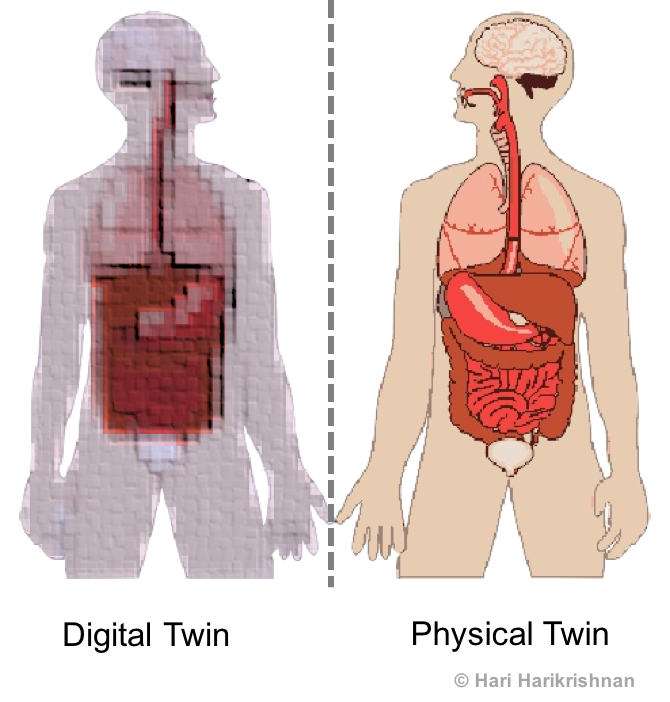
What would it take to create our digital twins?
Well. A lot more than creating the digital prototype of a robot.
Body by the Numbers
First, it's complex.
This is just a superficial look at the complex human hardware, classified by parts (bill of materials or BOM, if you are into discrete manufacturing), just to show some steps involved in creating digital twins of ourselves. It's superficial because it looks at parts at the “macro-level”, not at the fundamental, cellular, or genomic level.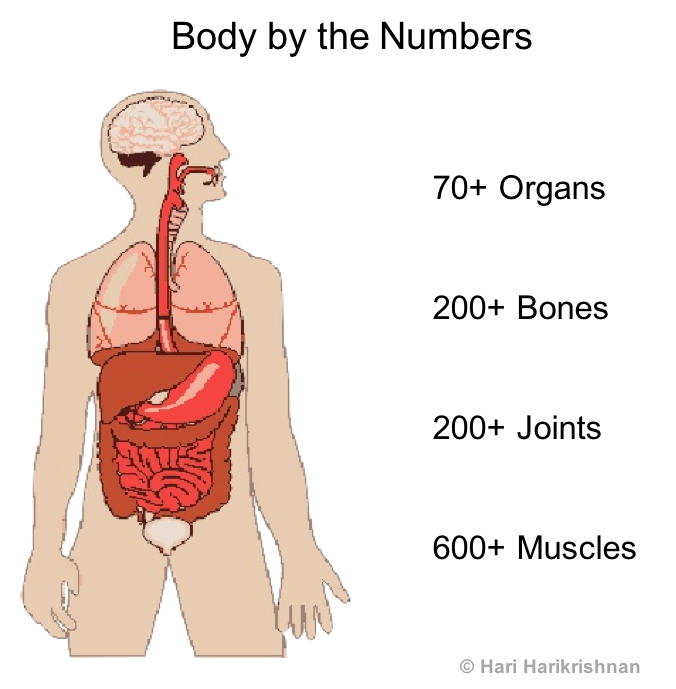
This is just a superficial look at the complex human hardware by classifying the parts (bill of materials or BOM, if you are into discrete manufacturing). Just to show some steps involved in creating digital twins of ourselves. It's superficial because it looks at parts at the “macro-level”, not at the fundamental, cellular, or genomic level.
Okay, it’s complex, but…
Can we prioritize what we want to model from the above bill-of-materials?
Top Malfunctions
If we prioritize them by the top part failures and cause of death, the top 10 killer diseases worldwide affects the key organs as shown below.
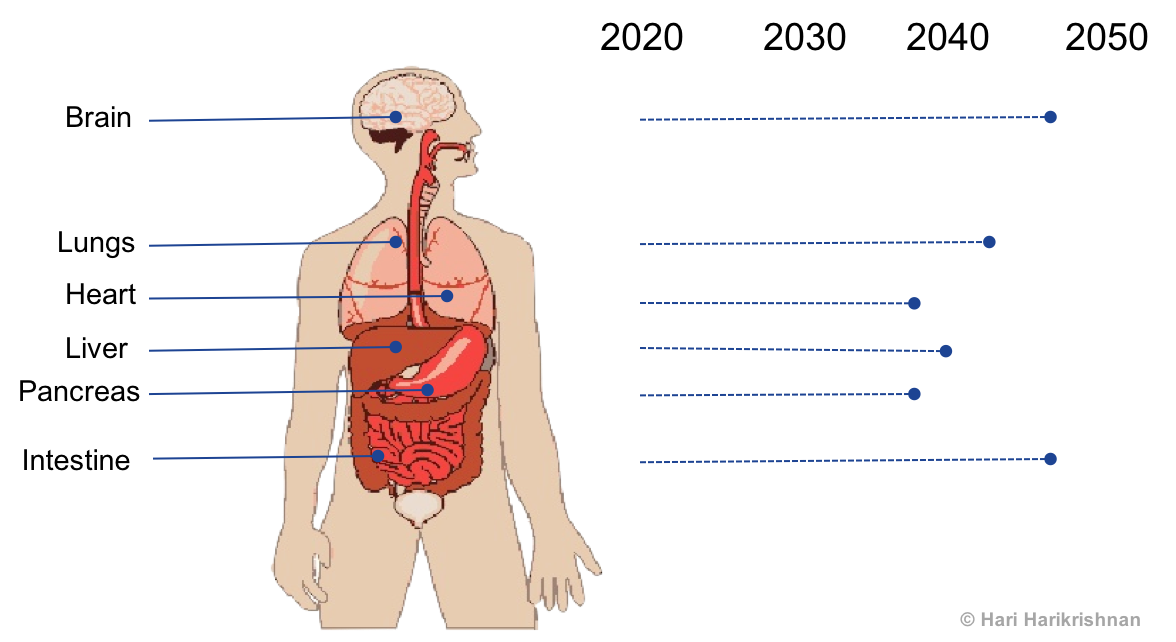
Cardiac and pulmonary diseases, diabetes, Alzheimer's and diarrhea — leading causes for death – are centered on the above six organs. The impact varies depending on whether you live in developed or developing countries and your economic strata, of course.
If we had digital twins for these six organs, we would know which ones are likely to fail first as we age chronologically over the next 30 years from 2020 through 2050, as shown above. We would know how these macro-part failures cause the entire system to fail.
Always-on connectivity and data processing via IoT will help keep the digital twins up-to-date relative to the physical body, just like in the industrial IoT world.
Wouldn’t that be the predictor and influencer for how we improve our quality of life? For how we change our lifestyle and medicate ourselves?
Not EHRs, but Digital Twins
EHRs serve their purpose. But, enough with singing praises of those glorified log files in the cloud.
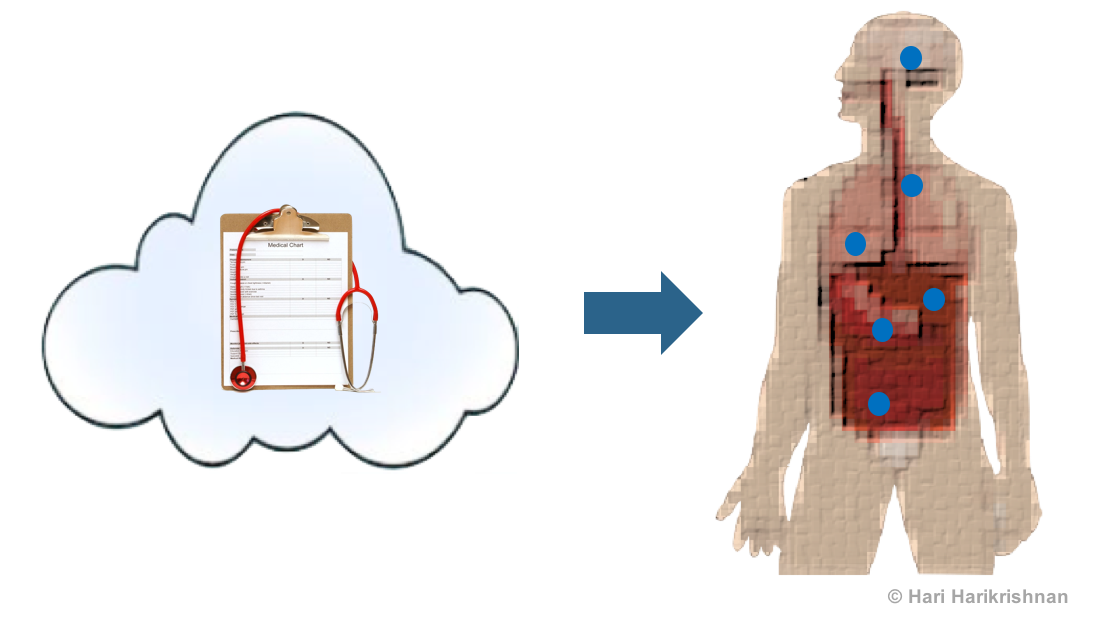
I am past the life stage of singing “I want my MTV”. By the next decade, I want to plan my health trajectory and life expectations better. For that, I want my digital twin.
The Most Comprehensive IoT Newsletter for Enterprises
Showcasing the highest-quality content, resources, news, and insights from the world of the Internet of Things. Subscribe to remain informed and up-to-date.
New Podcast Episode

Moving Past the Pilot Phase in IoT and AI
Related Articles




